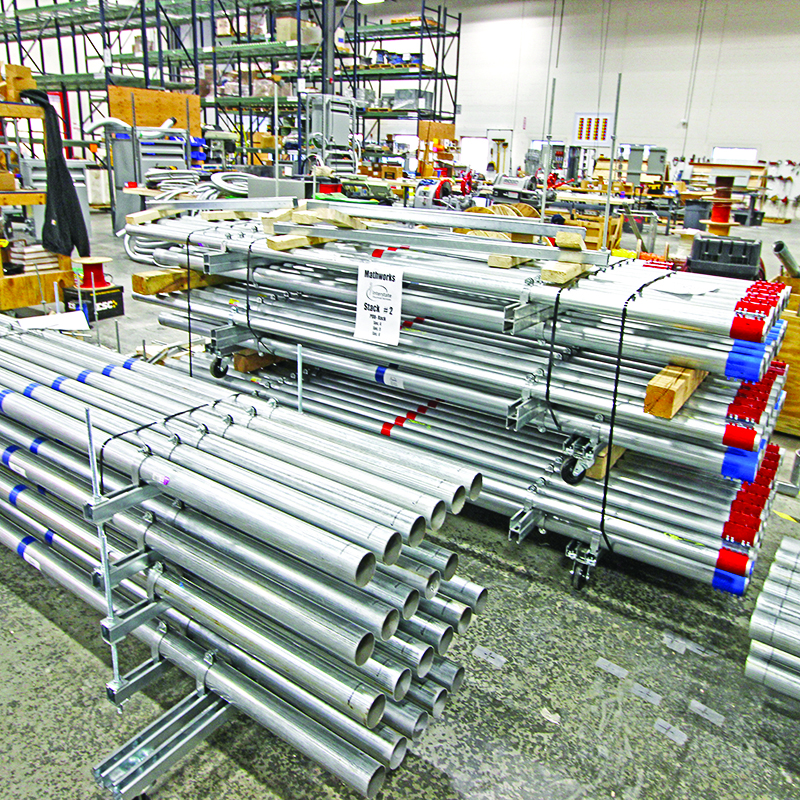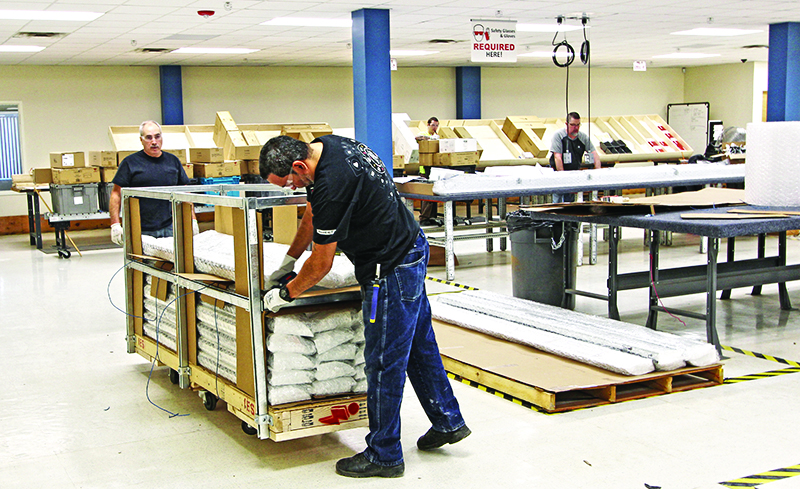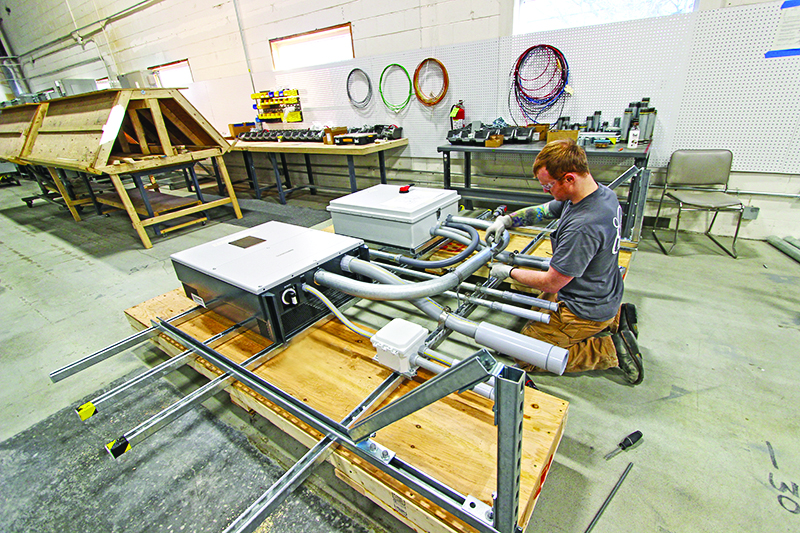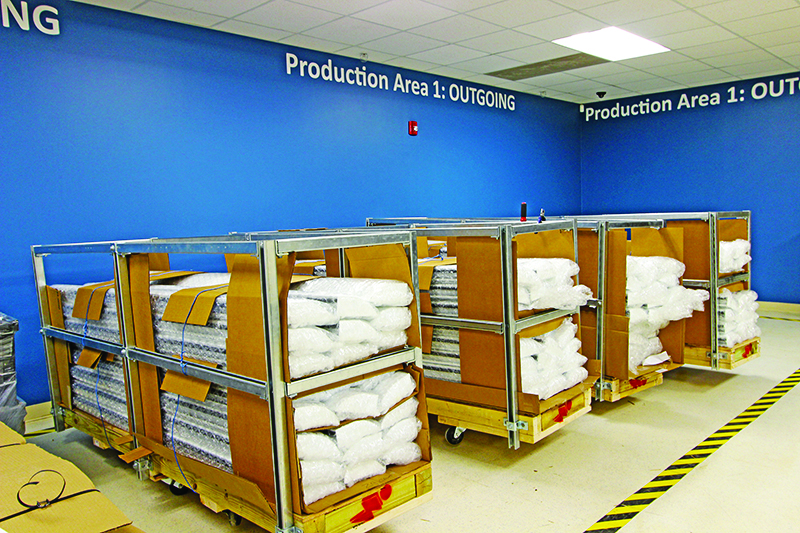
Interstate Electrical Services
The electrical industry is evolving toward specialization in a way that is not unlike the evolution of medicine. A century ago, doctors were jacks of all trades. As the field of medicine developed, specialization was the result.
A generation ago, electricians were jacks of all trades, too. They would do everything - from project planning, to installation, to the “grunt work” of lugging materials to and around the jobsite. Today, we see the electrical trade quickly evolving, with licensed specialists in the field doing a job that is as mentally demanding and as highly skilled as few other careers are today.
The way construction projects are managed today has evolved as well. Schedule pressures, as well as site and labor constraints, have demanded that general contractors and subcontractors completely rethink what constitute best practices for material management and delivery.
Targeted Materials Delivery is a material management strategy adopted by Interstate that combines centralized receiving with structured component prefabrication and just-in-time job site placement of installation-ready parts - a process that adheres to Lean Construction 30|30 means and methods. It’s a highly efficient way of doing business, but it wasn’t always this way.
The Old Way - Lots of Moving Parts (Literally)
Not long ago, it was typical for an electrical subcontractor like Interstate to have manufacturers and distributors deliver packaged material (things like lighting, receptacle boxes, distribution wire and cable trays) directly to the jobsite, based on a rough project timeline. Once the truck rolled onto the site, electricians had to shift gears from installation tasks to material handling. Incoming material had to be received, checked quickly for damage and stacked in place either on the job site or carried out to a job trailer until it was needed for assembly and final installation.
Once ready to install, materials were unboxed, checked more thoroughly for damage and prepared for final installation. Preparation tasks included installing lamps, ballasts, drivers and other required hardware. If the fixture was a suspended unit, the associated parts - cables, connectors and canopy hardware - had to be located and moved separately to the point of installation since these items are typically packaged (and often shipped) separately.




In-wall receptacles and switches, individual boxes, mounting hardware, switches, duplex, quad receptacles and data receptacles were all inventoried individually and moved in bulk from the storage area to the point of installation, which could be right next to the storage location or across a 150,000 s/f facility. Transformers and other bulk items required some level of assembly and set-up. All of these pre-installation activities demand floor space to unpack, display and assemble the various pieces necessary to make the items install-ready. Working with the small nuts and bolts often needed to do this type of work requires hand assembly and fine motor skills. It can be difficult and frustrating when working in the cold, dark and dust often experienced on an active jobsite.
All of the packaging material had to be collected and recycled or disposed of properly in accordance with the job specifications. Damaged fixtures were repackaged and moved off the floor and back into storage, and missing hardware had to be tracked down or re-ordered.
These necessary steps in the construction process were time-consuming, physically demanding and distracting, particularly in light of the overriding goal - to install electrical systems as designed in order to meet both schedule and budget.
Targeted Material Delivery and the Evolution of the Electrical Industry
Targeted Materials Delivery ensures that all of the required supplies are organized and available for the site team to use at the point of installation. Not only is it more efficient, it is also safer for the site team. Minimizing movement around a job site reduces the potential of injury due to site conditions, including slips, trips and falls and other injuries.
According to Bob Manning, general superintendent at Interstate, Targeted Materials Delivery allows electricians in the field to “fully focus on the job at hand.”
“Back in the old days, when we did everything in the field, a lot of the work was repetitious and frankly, boring. You pulled the cable, you cut the cable, you stripped the cable,” said Manning. “That part of the job required less skilled employees, but everyone ended up doing it.”
“As the work in the field has become more sophisticated, electricians must be very knowledgeable and skilled at what they do, think on their feet and collaborate with engineers, detailers, designers and other trades on the job site to confront complex challenges,” he continued. “Work that requires less skill but still needs to be conducted and supervised according to strict standards is done in our UL-certified, quality-controlled Operations Center.”
One valuable benefit of Targeted Delivery, according to Manning, is that electricians can start their work weeks or months before they have access to the job site.
“A job in the field that would have taken six electricians to do a few years ago might take just two electricians today, Manning said. “The cable cutting, stripping and other labor-intensive work has already been done in advance. It’s a huge savings in time.”
Fully adopting Targeted Materials Delivery requires an investment in time and money, but the payoffs are clear on a number of critical fronts: safety, reduction of site footprint, inventory control and management, and overall efficiency. It is not an all or nothing proposition. Companies can take incremental steps toward adopting Targeted Materials Delivery methods and processes. Employees will always need time to acclimate to a new way of doing things, but this case, it’s worth it for everyone involved.
Brian Lewis is vice president of construction, Insterstate Electrical Services, Billerica, Mass.








.png)